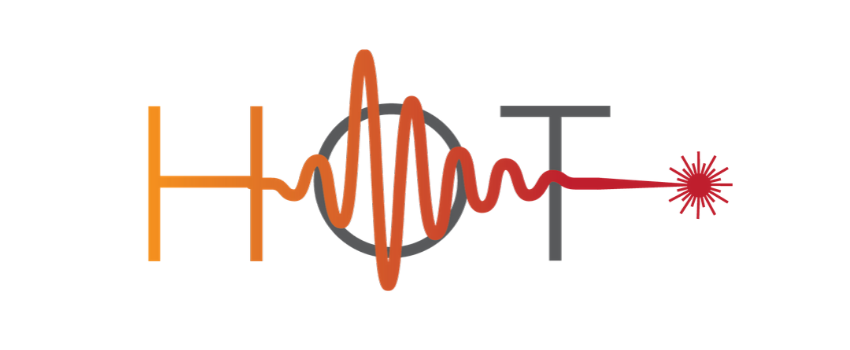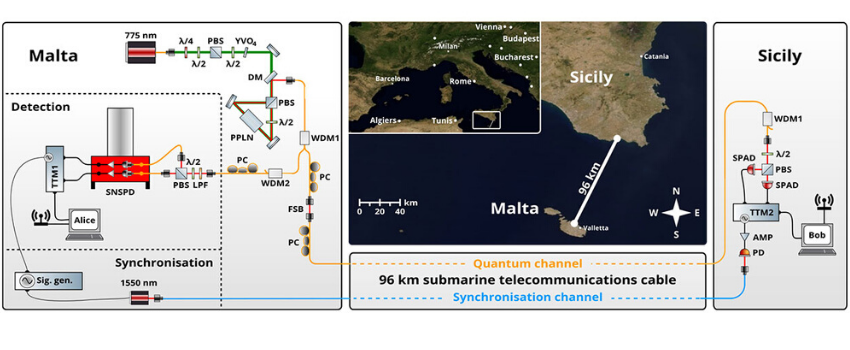Think of a real-life Sheldon Cooper, without all the oddities that make the fictional character loved by so many on our TV screens, but with all the earnestness and sudden jolts that come about with each new discovery made. Newspoint interviewed Prof. André Xuereb, who heads the Department of Physics at the University of Malta, about the real-life, ongoing work in an interesting field that is fast making waves: quantum mechanics.
How would you explain quantum mechanics to an outsider?
Over a 100 years ago, scientists noticed that small objects behave in strange ways which defy intuition. These pioneers formulated quantum mechanics to explain this strangeness. One of the implications of this theory – quantum mechanics – is that certain objects can exist in what we now call “superposition states.” In a very approximate manner, we can say that an object in a superposition is in more than one configuration simultaneously; imagine a switch that is on and off at the same time. These ‘superposition’ states can be used to store quantum information – just like computers store information in 0's and 1's, a quantum bit can store data in the form of a superposition.
The quantum internet is a networking technology, still heavily under development, that helps people exchange this kind of quantum information, by sending a quantum property called ‘entanglement’ from one place to another.
Is the quantum internet ever meant to replace present-day internet?
That is not the case. Quantum internet would supplement our current networks and provide us with new capabilities.
The most immediate application would be in creating ultra-secure communication links. Let us take the ‘https’ prefix for most website addresses – this kind of security can, in principle, be broken by quantum computers. The quantum internet would provide us with a method to establish a secret key that is secure against any attack, now and forever. This is called quantum key distribution and is already in use in some places around the world.
The quantum internet could also allow us to do other things that are currently impossible. Consider a company that wants to use a cloud computer to analyse some data. At the moment, there is no option but to give the cloud computer full access to the data and the algorithms that will operate on it. Quantum computers provide a way out. It is actually possible to send both the data and the algorithm encrypted to a quantum computer and have it perform the analysis without ever being able to decode the data, the algorithm, or the outputs. Companies that would like to protect their intellectual property rights would really find this useful.
There are plenty of other applications, but one of the most interesting aspects of this technology is that we do not know what it will eventually be used for!
How is the UM’s Department of Physics contributing to the different technologies of quantum internet?
Although the best means for transmitting quantum information is light, the best means for storing quantum information is most certainly not light, which is almost impossible to store. Therefore, it is necessary to build devices that translate between light and other carriers of other information whilst preserving the quantum information in the signal.
Through the project H.O.T. – Hybrid Optomechanical Technologies, we are developing a new basis for devices that use the interaction between light and vibrations of small drums to perform this translation. It turns out that these devices are suitable for a large number of uses. One of the uses of these devices is to measure tiny forces, which makes them suitable as GPS replacements when navigating deep underground.

When I say ‘we,’ I am not just including the team at UM. I am referring to a number of European universities working together with the industrial giants; 17 research groups across 11 countries, developing proof of concept devices with potential market readiness. HOT is funded by the EU Horizon 2020 FET-Proactive programme for research and innovation under Grant Agreement 732894.
In Malta, we play an important role in the theoretical underpinnings of HOT. Through this project, we employ two PhD students, a post-doctoral researcher, and a science communicator. We have made numerous advances that help use and understand optomechanical technologies better. More recently, we started collaborating with experimental groups in the network to develop theory that would allow us to model their experiments mathematically.
Other than the H.O.T. project, what are you working on?
We have demonstrated a link between Malta and Sicily that allows us to transfer quantum information between the two countries using the standard telecommunications network.
This is one of the key building blocks of entanglement distribution networks. We actually hold the world record for the longest distance entanglement has been sent over the telecommunications network, as well as the previous record. This work was performed in collaboration with Melita Ltd, as well as a large number of colleagues from around Europe.
Whilst working to build the quantum link to Sicily, we conducted an experiment on the side that demonstrated how the global telecommunication network can be used to detect earthquakes and potentially save lives. This work was published in the very prestigious academic journal Science, and I have recently been awarded a local research grant by the University of Malta to develop this idea further.
Together with INRiM in Italy and National Physical Laboratory (NPL) in the UK, I have been awarded funding through the NATO Science for Peace and Security (SPS) programme to develop quantum communication technology better and demonstrate another quantum link between Malta and Sicily. In this project, I am collaborating with the Faculty of Information and Communication Technology (FICT) at the University of Malta.
FICT is also involved in a second NATO SPS project that aims to develop new encryption algorithms that cannot be broken by any known algorithm, including those running on quantum computers. These projects are funded by the NATO Science for Peace and Security programme under Grant Agreements G5485 and G5448.

What is in the future of your research team?
I honestly do not know – and that is what I find most exciting! One of the wonderful aspects of being a scientist and an academic is the ability to follow interesting leads, whatever they may be.
We have lots of ongoing work in our more traditional fields of study. In optomechanics, we are investigating new physics that arises in complex optomechanical networks containing many such devices. My colleague and good friend Tony Apollaro is a leading expert in the physics of how quantum information can be transported using what are known as spin chains. More broadly, there is a very strong interest from both private and public sectors to deploy quantum communication technologies in Malta for securing data.
The future seems bright indeed – if a little busy.



